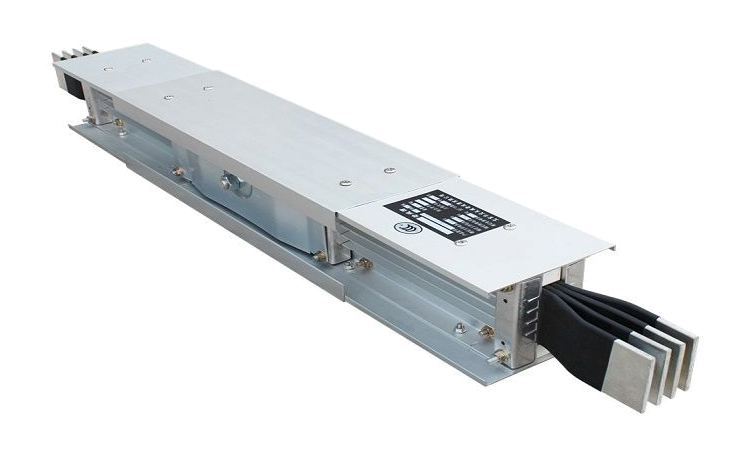In an era where sustainability is paramount, the demand for green solutions in electrical infrastructure is on the rise. Modern buildings and industries are increasingly seeking ways to reduce their carbon footprint and enhance energy efficiency. Busbar trunking systems have emerged as a leading solution in this regard, offering significant advantages over traditional cabling methods. This article explores how busbar trunking systems contribute to sustainable electrical infrastructures and why they are essential for modern, eco-friendly buildings.
Understanding Busbar Trunking Systems
A Busbar Trunking System is an electrical distribution system that uses busbars—flat, conductive strips made of copper or aluminum—to conduct electricity efficiently within a building. These systems are designed to replace traditional cabling methods, providing a more flexible, reliable, and efficient solution for power distribution. Their modular nature allows for easy expansion and adaptation, making them ideal for modern infrastructures that require scalable solutions.
Environmental Benefits of Busbar Trunking Systems
1. Enhanced Energy Efficiency
One of the primary environmental benefits of busbar trunking systems is their superior energy efficiency. Busbars have lower electrical resistance compared to traditional cables, which reduces energy loss during transmission. This increased efficiency translates to lower energy consumption and reduced greenhouse gas emissions, contributing to a smaller carbon footprint.
2. Material Efficiency and Waste Reduction
Busbar trunking systems are designed to use materials more efficiently. The use of high-quality copper or aluminum busbars minimizes the amount of raw material required for electrical distribution. Moreover, the modular design of busbar systems allows components to be reused and reconfigured, reducing waste and the need for new materials. This efficient use of resources is a key aspect of sustainable infrastructure development.
3. Durability and Longevity
The robust construction of busbar trunking systems ensures a longer lifespan compared to traditional cabling. This durability reduces the frequency of replacements and the associated environmental impact of manufacturing and disposing of electrical components. By investing in durable, long-lasting systems, organizations can significantly reduce their environmental footprint.
Innovations in Busbar Trunking for Sustainability
1. Integration with Renewable Energy Sources
Busbar trunking systems are highly compatible with renewable energy sources such as solar and wind power. Their ability to efficiently distribute power from renewable sources makes them an integral part of sustainable energy infrastructure. As the world transitions to greener energy solutions, busbar systems facilitate the seamless integration and distribution of renewable power.
2. Smart Monitoring and Control
Modern busbar trunking systems are equipped with advanced monitoring and control technologies that provide real-time data on power usage and system performance. This information allows for more efficient energy management and proactive maintenance, further reducing energy waste and operational costs. Smart busbar systems contribute to overall sustainability by optimizing energy use and minimizing downtime.
3. Sustainable Manufacturing Practices
Manufacturers of busbar trunking systems are increasingly adopting sustainable practices in their production processes. This includes using recycled materials, reducing water and energy consumption during manufacturing, and minimizing waste. These practices not only reduce the environmental impact of production but also align with global sustainability goals.
The Role of Busbar Trunking in Modern Electrical Infrastructures
Efficient Power Distribution
Busbar trunking systems provide a reliable and efficient means of power distribution, essential for modern infrastructures. Their ability to handle high power loads and distribute electricity with minimal losses makes them ideal for commercial and industrial applications. This efficiency helps buildings meet stringent energy codes and sustainability standards.
Flexibility and Scalability
The modular design of busbar trunking systems allows for easy expansion and reconfiguration, making them highly adaptable to changing power distribution needs. This flexibility is particularly beneficial in dynamic environments such as data centers and manufacturing facilities, where power requirements can change rapidly. By using busbar systems, organizations can future-proof their electrical infrastructure and ensure long-term sustainability.
Safety and Reliability
Busbar trunking systems enhance safety by reducing the risk of electrical faults and short circuits. The robust design and secure installation of busbars minimize the chances of electrical accidents, providing a safer environment for building occupants. Additionally, the use of high-quality insulating materials further enhances safety. This reliability is crucial for maintaining continuous operations in critical facilities.
Busbar Trunking System Installation
The process of Busbar Trunking System Installation is designed to be efficient and environmentally friendly. Here are some ways in which installation practices contribute to sustainability:
1. Minimal Disruption and Waste
The modular nature of busbar trunking systems means that installation is straightforward and generates minimal waste. Components can be easily assembled, disassembled, and reconfigured without extensive modifications to existing infrastructure. This reduces the amount of material waste and disruption during installation.
2. Reduced Installation Time
Busbar trunking systems can be installed more quickly than traditional cable systems, which reduces labor costs and energy consumption associated with installation. The efficiency of the installation process contributes to the overall sustainability of the project.
3. Future-Proofing Infrastructure
Busbar trunking systems are designed to be scalable and adaptable to future power needs. This future-proofing reduces the need for extensive renovations and upgrades, which can be resource-intensive and environmentally damaging. By investing in flexible and scalable systems, organizations can ensure their infrastructure remains sustainable over the long term.
Conclusion
Busbar trunking systems represent a significant advancement in sustainable electrical distribution. Their efficiency, durability, and compatibility with renewable energy sources make them an ideal choice for modern infrastructures. By adopting busbar trunking systems, organizations can reduce their environmental impact, lower operational costs, and future-proof their electrical infrastructure. At Manikaran, we are committed to providing cutting-edge solutions that support sustainability and efficiency. Explore our services to learn more about how our busbar trunking systems can enhance your infrastructure and contribute to a greener future.

